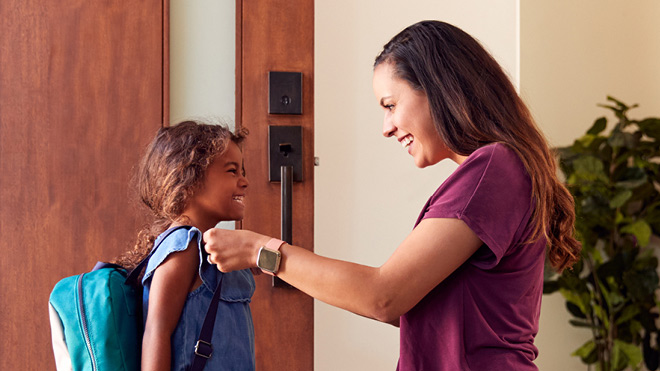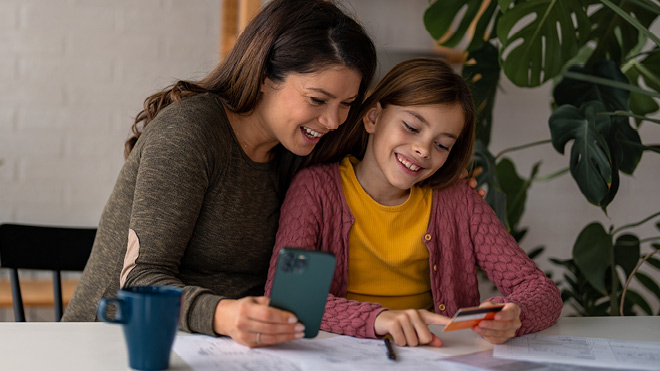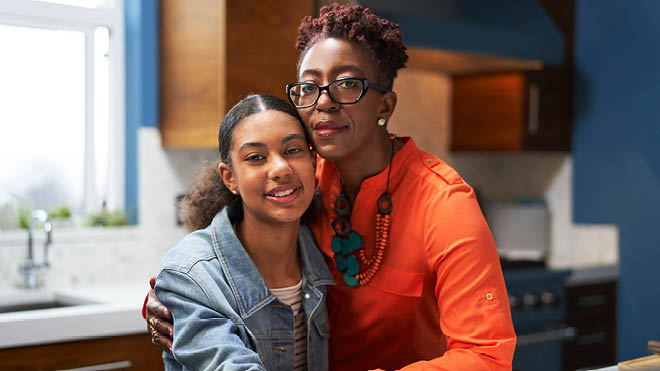
Back-to-School Budget-Friendly Shopping List
Back-to-school shopping needs can include supplies, clothing, shoes, electronics and more. Learn which items should go on your must-buy list.
With kids' summer activities in full swing, many families of K-12 kids are already starting to think about the upcoming school year. Planning ahead can help ensure you have everything you need and can help you save money by giving you time to shop around for deals and include school supplies in your family budget. But it can be tough to figure out what you need, when you need it and how to prioritize.
A recent National Retail Federation survey shows 94% of parents planned to buy school supplies, while another 2023 Deloitte survey noted that most consumers plan to prioritize supplies over apparel or other items.
You can choose supplies based on your school's published list, usually published in July or August, which can vary by grade level and teacher. Some schools ask for supplies that are shared with the class.
In the meantime, use our handy supply checklist to ensure you have everything you need.
School Supplies Checklist
Organization Tools Checklist
School organization supplies help contain clutter and tools for everyday use. These include:
- Folders of a specific size and color.
- Binders, either D-ring, Velcro, or zippered.
- Supply box.
- Pencil box or pouch.
- Dividers.
- Planner.
- Print the full school supplies checklist (PDF).
Paper Checklist
Depending on your child's age and grade, you may be asked to get various lined and unlined paper. Be sure you know whether your child's teacher asks for wide-ruled or college-ruled paper before you buy it. Paper supplies might include:
- One-subject spiral notebooks.
- Composition books.
- Sticky notes.
- Loose-leaf lined paper.
- Index cards.
- Print the full school supplies checklist (PDF).
Writing Supplies Checklist
Mechanical pencils are often a coveted item — and often outsell regular pencils. But the teacher may prefer old-fashioned No. 2 pencils that require a sharpener instead. You may be asked to buy the following:
- Ball-point pens.
- Pencils.
- Pouch.
- Highlighters.
- Pencil sharpeners (usually handheld).
- Dry-erase markers.
- Felt-tip pens.
- Erasers.
- Print the full school supplies checklist (PDF).
Art Supplies Checklist
Art supplies are often on the school supply list for elementary grades, particularly kindergarten through third grade. These include:
- Glue and glue sticks.
- Tape.
- Coloring supplies (colored pencils, crayons, markers).
- Watercolor paints and brushes.
- Scissors.
- Print the full school supplies checklist (PDF).
Math Supplies Checklist
Elementary schools may ask for rulers and protractors. Pay attention to calculator specifications by the time your child reaches middle school because required features can differ by course. A few math supplies that may be needed:
- Calculator or graphing calculator.
- Graph paper.
- Protractor.
- Ruler.
- Print the full school supplies checklist (PDF).
Personal Supplies Checklist
Many of the below are optional or depend on whether your child qualifies for free or reduced lunch, wants to buy school lunch or can reuse last year's backpack, water bottle and lunchbox.
- Backpack.
- Insulated lunchbox or lunch bag.
- Reusable water bottle.
- Reusable freezer pack.
- Hair care (comb, hair ties, or styling products).
- Tissues.
- Sunglasses.
- Hand sanitizer or sanitizing wipes.
- Menstruation (period) supplies.
- Print the full school supplies checklist (PDF).
Gold Star Bonus: Class Supplies Checklist
Some teachers depend on or appreciate parent help to support everyday needs for the whole class.
- Disinfecting wipes.
- Hand sanitizer.
- Resealable, zipper-to gallon bags.
- Reams of white copy paper.
- Glue, tape, or masking tape.
- Snacks.
- Boxes of markers, crayons, colored pencils and writing pencils.
- Print the full school supplies checklist (PDF).
Clothing Checklist
According to the NRF survey, 93% of parents planned to buy clothing for the return to school. Within this category, USDA data (PDF) shows that buying clothing accounts for 5% to 7% of a family's household budget throughout the year.
The USDA noted that costs increase as children grow older, particularly during the tween and teen years, ages 12-17. A combination of rapid changes — including growth spurts and fashion trends — can add up fast.
Everyday Clothing Checklist
- 1-2 jackets or flannels.
- 5-7 jeans, pants or skirts.
- 7-10 long-sleeve and short-sleeve shirts.
- 1-2 sweaters.
- 2 sets of PE clothes (shirt, shorts, socks), one for washing and one for wearing.
- Print the full school supplies checklist (PDF).
Basics Clothing Checklist
- 7-10 pairs of socks.
- 1-2 bras.
- 7-10 pairs of underwear.
- Belt.
- Print the full school supplies checklist (PDF).
Outerwear Checklist
- Raincoat or windbreaker.
- Winter coat.
- Jackets.
- Scarf.
- Gloves or mittens.
- Warm hat.
- Print the full school supplies checklist (PDF).
Shoes Checklist
The NRF survey shows 91% of parents planned to buy shoes. They may face some sticker shock; kids' shoe prices have skyrocketed into double-digit percentages (PDF) in recent years. On average, a pair of shoes costs $144.
Look for a good value, as you may return to the shoe department sooner than you think. According to the Institute for Preventive Foot Health, a pair of children's shoes only lasts four months on average. Much depends on shoe quality and steps taken — girls average 10,000-13,000 steps daily, while boys average 12,000-16,000. So, think about the year's total costs when shopping for:
- Athletic shoes.
- Casual everyday shoes.
- Galoshes or boots.
- Print the full school supplies checklist (PDF).
Second-hand apparel can be an excellent way to save money. But the Institute for Preventive Foot Health discourages used or hand-me-down athletic shoes, as these shoes wear down to accommodate the previous owner's feet and gait.
Electronics Checklist
Electronics are the most expensive category of back-to-school shopping. But overall, in recent years, consumers aren't as excited about spending on kids' devices. In 2022, the category's market growth dropped by 8%, according to a survey by Deloitte. In 2023, tech's growth decreased another 13%.
But 81% of parents in the 2022 survey also said their child's school provided any required technology.
Electronics that a school may require or may want you to get include:
- Headphones.
- Laptop.
- iPad or other tablet.
- Cellphone.
- Digital subscriptions.
- Printer.
- Software.
- Print the full school supplies checklist (PDF).
Other Surprise Expenses
While you may not add these items to your shopping list, you might budget for the following:
- Out-of-pocket sports physical check up costs, including copays or coinsurance.
- Field trips.
- After-school clubs and programs.
- After-school childcare.
- Donations.
Get Help With Back-to-School Expenses
Depending on income and location, your family may qualify for free school supplies and back-to-school clothing. A few organizations offering free supplies, clothing, and vouchers:
For example, Assistance League provides students pre-selected from King County's Eastside school districts in Washington state, with $100 shopping vouchers. Children can shop for clothes, shoes, supplies and other necessities.
In general, a good place to start to get financial help with school supplies is with your child's school or school district.
If you want to help others in our community, The Seattle Times School Drive raises funds for Hopelink, YWCA Seattle-King-Snohomish and the Seattle/King County Coalition on Homelessness to provide 3,500+ students with new backpacks filled with supplies.
The above article is intended to provide generalized financial information designed to educate a broad segment of the public; it does not give personalized financial, tax, investment, legal, or other business and professional advice. Before taking any action, you should always seek the assistance of a professional who knows your particular situation when making financial, legal, tax, investment, or any other business and professional decisions that affect you and/or your business.


